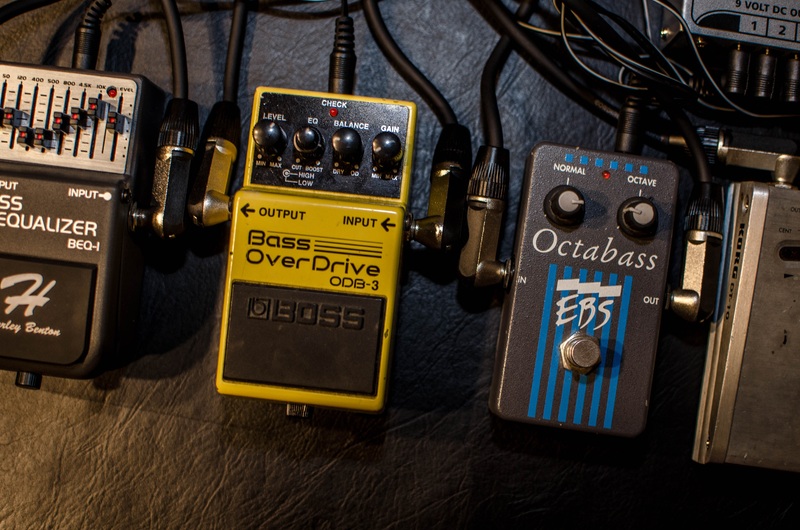Pattern matching will make Java an even more powerful language
We’ve known lambdas and streams since Java 8, and they’ve made Java a more powerful language. In the next few versions of Java, even more features that originated in functional languages will be added, one of which is pattern matching. It provides an elegant way to apply conditions to certain aspects of an object. We set out to investigate the possibilities that were introduced in JEP 305 (‘Pattern Matching for instanceof’) and how the pattern matching roadmap will make Java an even more powerful language.
Type patterns
We’ve probably all been there: you want to know whether an object is of a certain type, so that you can call one of its methods. To achieve this in ‘classic’ Java, you need an instanceof test, a cast to the target type and an assignment to a local variable. This approach comes with repetition, is sensitive to errors and - most importantly - not very fun to write. If only we could improve that!
Pattern Matching for instanceof, which is a preview feature in Java 14, is a first step in adding support for pattern matching to Java. This feature allows us to replace the three steps we mentioned earlier by just a single expression!
// Java 13
@Override
public boolean equals(Object o) {
// As pattern matching is music to our ears, we defined a domain model of an orchestra.
if (!(o instanceof Musical)) {
return false;
}
Musical m = (Musical) o;
return name.equals(m.name) && isPrincipal == m.isPrincipal;
}
// Java 14
@Override
public boolean equals(Object o) {
return o instanceof Musical m && name.equals(m.name) && isPrincipal == m.isPrincipal;
}
This code example defines a pattern Musical m, that consists of a type Musical and a label m. This is the same type that is used in an instanceof test to match an object of said type. After a successful match the object is automatically cast and assigned to the pattern variable with a name equal to the defined label. This single pattern now replaces the instanceof test, an explicit cast and a variable assigment.
In the near future switch expressions will also start supporting pattern matching, which really showcases its power. The exact syntax is still subject to change, but it will probably look like the example below.
String whatDoesTheMusicianSay = switch (musical) {
case Vocal v -> String.format("The singer goes %s", v.sing());
// The singer goes "Aaaa"
case Guitar g -> String.format("The guitar goes %s", g.play());
// The guitar goes "Pling pling"
case Drums d -> String.format("The drums go %s", d.hit());
// The drums go "Padum Chee"
default -> String.format("Unknown Musical goes %s", obj.play());
};
As you can see, the incorporation of pattern matching into switch expressions can yield code that is surprisingly elegant. But wait, there’s more.
Constant patterns
A second kind of pattern may be already familiar to you: the case label of a switch statement. Case labels currently can take numeric, String or enum values, and in the future they will be referred to as constant patterns. It’s a new name for a familiar concept, to further clarify that case labels will be able to take multiple kinds of patterns in the future.
Deconstruction patterns
Deconstruction patterns take pattern matching to the next level by adding an ‘extract’ capability after a successful pattern match. In the future we’ll be able to use this feature, thereby eliminating the need to call any getters on the matched object. Instead, we can gather all relevant fields in a single statement. A deconstruction pattern performs this gathering by relying on a pattern definition, a ‘reverse constructor’ if you will, to assign the values of the object’s fields to the pattern variables.
return switch (musical) {
case Orchestra(List<Musical> musicians) -> String.format("Orchestra, consisting of %d musicians.", musicians.size());
// Using definition "public pattern Orchestra(List list)"
case InstrumentFamily(Guitar(true, String guitarName), Trumpet(true, String trumpetName)) -> String.format("Two principals of guitarist %s and trumpetist %s.", guitarName, trumpetName);
// Using definitions "public pattern InstrumentFamily(Musical m1, Musical m2)" and "public pattern Musical(boolean isPrincipal, String name)"
};
The patterns in this code example match on the types Orchestra and InstrumentFamily. The match on the Orchestra type will only succeed if the object musical can be extracted as a List of Musicals. If the match succeeds, the variable musicians will be in scope and we can interact with it. So a deconstruction pattern allows us to match objects, cast them and interact with its fields: all using a single case construct.
It can’t get more powerful than this, you might think. But it can! The patterns that we wrote about until now can also be used in composition, as is depicted in the second case block of the code example. Here we combine one deconstruction pattern (InstrumentFamily(...)), a few type patterns (Guitar(...) and Trumpet(...)) and two constant patterns (true). To summarize: this pattern matches any InstrumentFamily that can be extracted as a Guitar and a Trumpet, which both have isPrincipal set to true. This shows that when composing patterns all pattern kinds are at your disposal and can be combined as you wish.
Var & any patterns
Java 10 brought us the capability of declaring variables with the var keyword, instead of a specific type. The same capability comes to mind with var patterns: pattern can use var instead of a specific type, and the compiler will then infer the right type pattern. This also bypasses the type condition, as the compiler will match on the first field that yields a valid type pattern, after which it will bind the encountered value to the pattern variable as usual.
case Guitar(var name) -> String.format("The guitar is called %s", name);
Any patterns (denoted by a single underscore character) are like var patterns: they match the first field that is found, but after matching successfully no actual value will be bound. This may not sound very useful at first, but it can become a powerful tool when used in a pattern composition. In this role, an any pattern can express that some parts of a matched object are in fact irrelevant and can be ignored.
case Orchestra(_, VocalFamily vf), Orchestra(VocalFamily vf, _) -> "This orchestra contains a vocalist.";
A better serialization?
Like a constructor transforms a set of typed variables into a populated object, a deconstruction pattern transforms a populated object into a set of typed variables. As such they are opposites, and this characteristic holds the potential to be an important part of the future of serialization. Although serialization is an integral part of the Java language, its implementation doesn’t sit right with everyone. It undermines the accessibility model, for instance. On top of that, serialization logic is not readable code by default and it bypasses constructors, rendering any data validation logic that might be part of an object’s initialization useless. But the situation could improve dramatically when we would introduce pattern matching to serialization.
In the future, classes will be able to contain pattern definitions, and they would be a perfect place to serialize a class instance. Deserializing could then happen in an overloaded constructor or in a factory method. This would mean all serialization logic would become readable code, and any data validation could become a part of the deserialization logic. To top it off, applying specific annotations would further clarify the intent of the (de)serialization code.
class Orchestra {
@Deserializer
public static Orchestra deserialize(Musical[] musicals) {
return Orchestra.ensemble(musicals);
}
@Serializer
public pattern Orchestra(Musical[] musicals) {
musicals = this.musicalPeople.toArray();
}
}
Supporting serialization for multiple versions for a class will remain a challenge, although plans have been drawn up to extend the @Serializer and @Deserializer annotation with a version property, which could contain the class version that is supported.
Records & sealed types
When we look at the roadmap for records, it becomes even more clear that pattern matching is part of a larger narrative. A compact way to model immutable data, records provide constructors, getters and implementations for equals() and hashCode() without defining them explicitly. When deconstruction patterns are introduced in Java, they will come with the addition of automatic pattern definitions in records. This will make it very easy to use records in a deconstruction pattern as part of a switch expression, for example.
record Trumpet(boolean isPrincipal, String name) implements Musical {
// The following piece of code will be generated:
public pattern Trumpet(boolean isPrincipal, String name) {
isPrincipal = this.isPrincipal;
name = this.name;
}
}
Sealed types is another relatively new Java feature that will play nice with pattern matching. Sealed types allow to you restrict the classes that can be implementors of your interface.
sealed interface Musical permits Vocal, Guitar, Drums {}
A switch expression that uses a sealed type as its target will be able to omit the default branch altogether, because the compiler ‘knows’ that the Musical interface is restricted to have three specific implementors only.
String whatDoesTheMusicianSay = switch (musical) {
case Vocal v -> String.format("The singer goes %s", v.sing());
// The singer goes "Aaaa"
case Guitar g -> String.format("The guitar goes %s", g.play());
// The guitar goes "Pling pling"
case Drums d -> String.format("The drums go %s", d.hit());
// The drums go "Padum Chee"
};
Conclusion
We have seen that pattern matching can do a lot more than just replace a few casts at an instanceof test. It improves switch expressions, it’s able to express complex logic elegantly and deconstructing objects can be a breeze, because pattern definitions are the opposite of constructors. On top of that, the design of new features like sealed types and records has incorporated support for pattern matching up front. This shows that pattern matching is quickly becoming a very important Java feature, and it is here to stay.
References & acknowledgements
Full code examples can be found at GitHub.
This blog post is based on an article that was published in the Dutch Java Magazine (#2-2021) and has been published here with permission by the Dutch Java User Group.



